THE WIND IN THE WILLOWS
|
Kenneth Grahame's book "The Wind in the Willows" was first published in 1908 and has remained a favourite for generation after generation. AA Milne created a play in 1929, Alan Bennett's play was first performed in 1994 and now, at PBDS we have our own homegrown version written and directed by the inimitable Nevin Ward. |
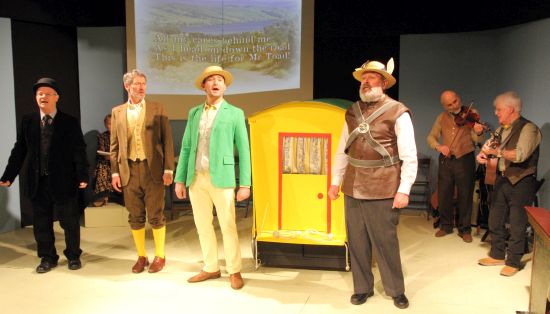 |
|
From the moment we saw the tasteful publicity, we knew that we were in for another treat from this talented society. The linking logo for posters, banners, scripts, programmes and backdrop showed willow trees in front of Newby Hall and decorated our town for the weeks before the show, while four carefully-knitted animals (thanks to 92-years-young Margaret Carver) were positioned in one of the theatre windows along with the publicity photos. |
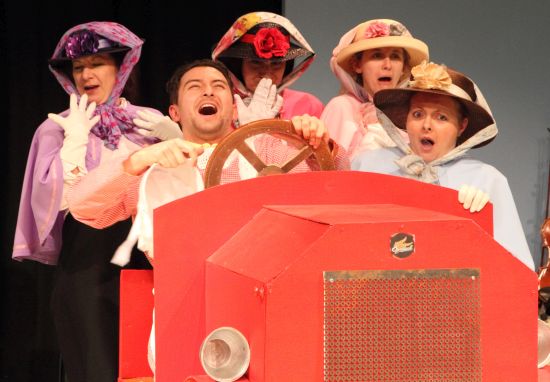 |
|
Nevin's talented and creative backstage team headed by Stage Manager Alan Stewart responded to the challenges he presented them with, producing many breath-taking and often amusing results. We counted up: a rowing boat, a canary-coloured caravan, an ingenious door in the Wild Wood, a beautiful red car capable of carrying five passengers, an amusing road and canal, a barge (called Marge) and a railway engine. Marvellous! Question: how on earth did the stage crew manoeuvre these large wonderful props in the very tiny backstage area? |
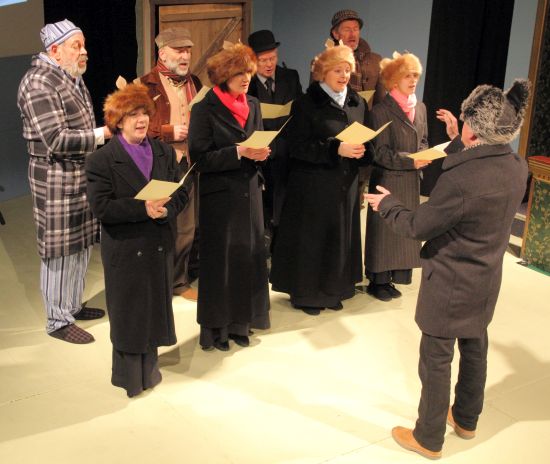 |
|
Christine Ward's costume-making is legendary, but even she must have had a few moments of disquiet when she realised that, in addition to the four main characters, she would be dressing the four members of the chorus who each required multiple costumes. The resulting costumes showed an imaginative and skillful seamstress at the height of her powers, and the chorus deserve commendation for their ability to deal efficiently with the many challenges of the costume changes. Two horses, an otter and a sea rat and Toad's disguise brought the tally of the costumes to well over 50. |
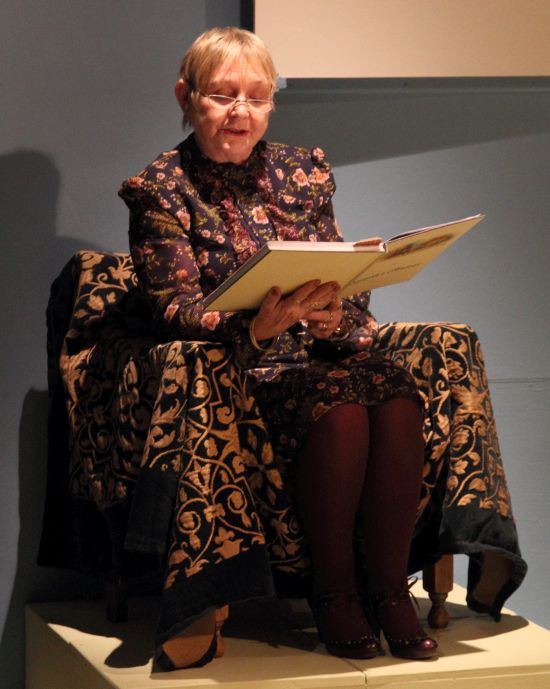 |
|
During the play Christine, herself, sat quietly and serenely in the reading seat, turning the pages of the giant book and reading the narration which held the play together. |
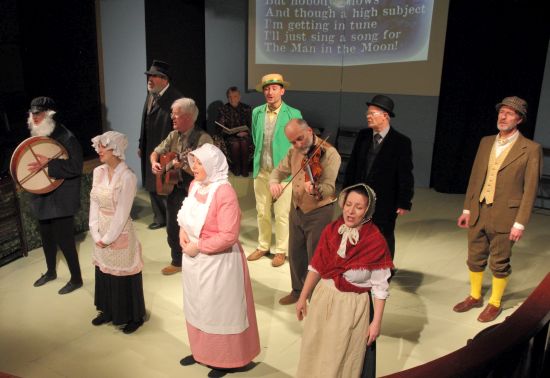 |
|
Those of you who know and love the story of The Wind in the Willows will have, like us, been delighted with Nevin's new interpretation, which often uses Kenneth Grahame's well-loved words. Mole, Rat, Toad and the Badger played out their story in amongst Nevin's imaginative and creative music which came in a variety of styles both original and adapted. |
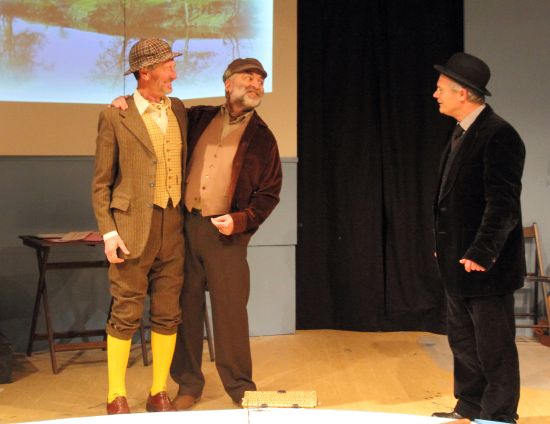 |
|
Fifteen songs, mostly Nevin's own words and music, were superbly arranged and accompanied by Steve Rouse & Nevin Ward. Steve played on fiddle, e-melodeon, accoustic bass guitar and 'beat-boxed' and also gave a lively portrayal of the flighty but helpful Otter- |
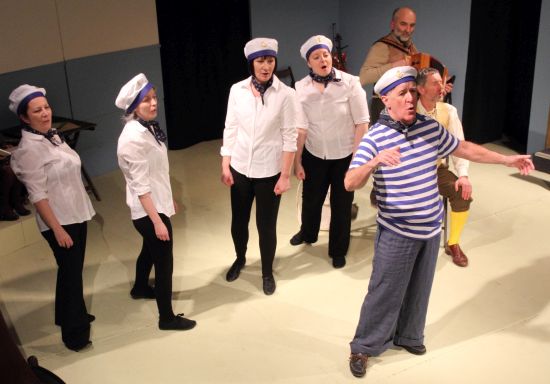 |
|
- while Nevin played accoustic and resonator guitars and also 'beat-boxed' and portrayed the Sea-faring Rat, who nearly persuaded Ratty to abandon his beloved river bank.
The music made a hugely significant contribution to the joy of the production. The two incredibly talented musicians helped to maintain the pace and subtly played with our emotions. Nevin's tight and imaginative direction and witty script with its many jokes and opportunities for audience participation carried us along. |
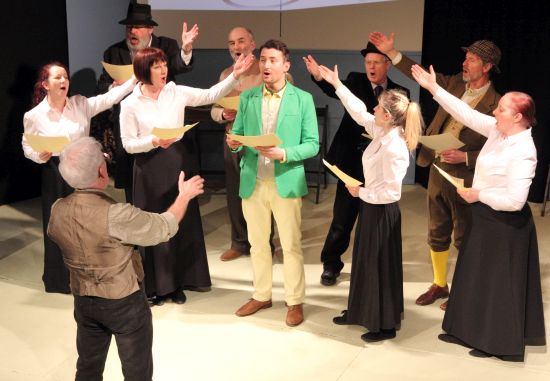 |
|
The members of the cast all sang beautifully, in a variety of styles, sometimes in four-part harmony, with solos and choruses often incorporating skilfully-choreographed dancing. The standard of the singing was invariably excellent, the singers' diction was exemplary, and the audience dutifully and gladly sang the tuneful choruses, even the one in French, shouting out: "Oh Good!" whenever a chorus was announced. |
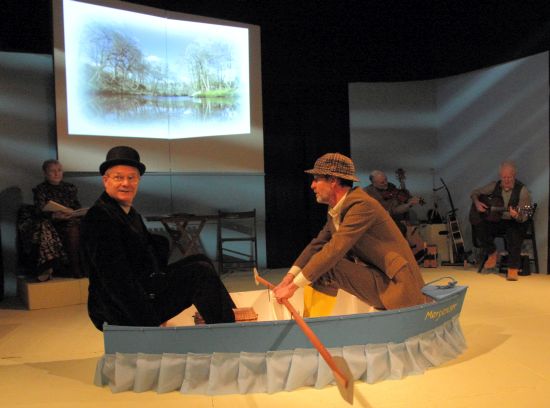 |
|
The audience, when they first made their way up to the auditorium, found members of the cast already assembling on the apron stage chatting to the early arrivals. This early engagement with the audience paid dividends when audience participation was called for; we wanted to support them and help them. The huge book stood closed, with the music corner ready prepared and the various instruments and the narrator's chair in position. Once opened the book became a giant screen on which Chris Iredale's beautiful photographs informed us of the locations as the play progressed. |
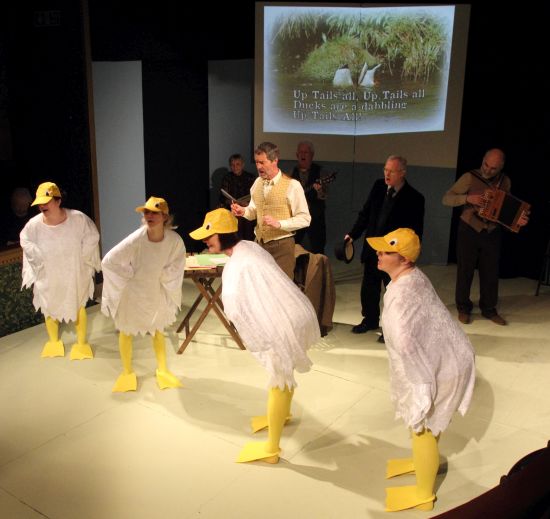 |
|
There were only 10 actors who between them played 50 parts. The four members of the chorus, with their speedy costume and character changes, delighted us with their versatility, changing from housewives to ducks, to field mice and swallows, weasels & stoats, sailors and then taking on their own multi-accented individual characters. |
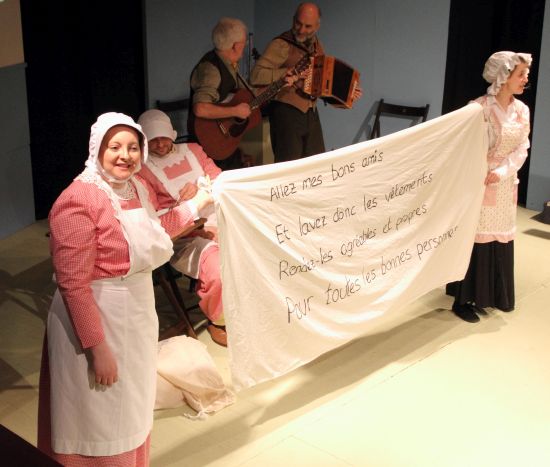 |
|
The challenges of accents from all over the British Isles and as far away as Louisiana and South Africa gave the chorus no problems; Heather Appleton's lovely French Creole singing, when portraying the washerwoman Tante Marie, had the audience participating in a French chorus for Monsieur Crapaud, the Toad ... |
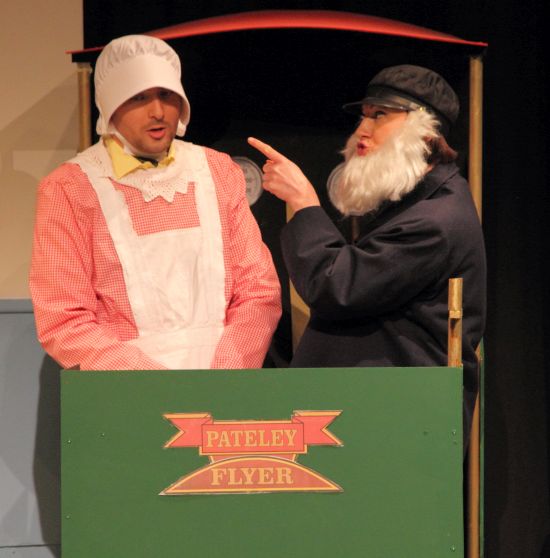 |
|
... Carol Bailey made an articulate and opinionated Welsh engine-driver and then delighted us with her playing of the Irish bodhran ... |
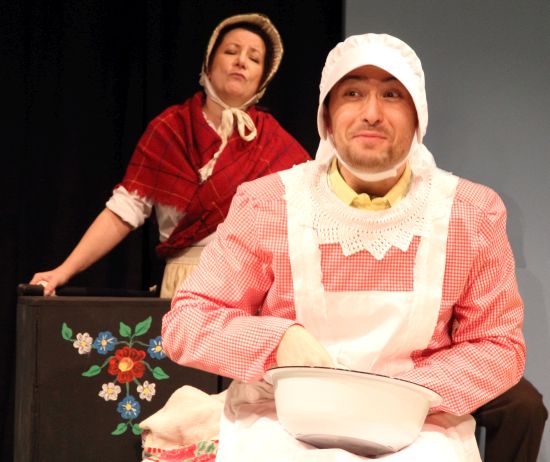 |
|
... Rachel Joynson made a suitably irate (but grammatically-correct!) Black-Country bargewoman and ... |
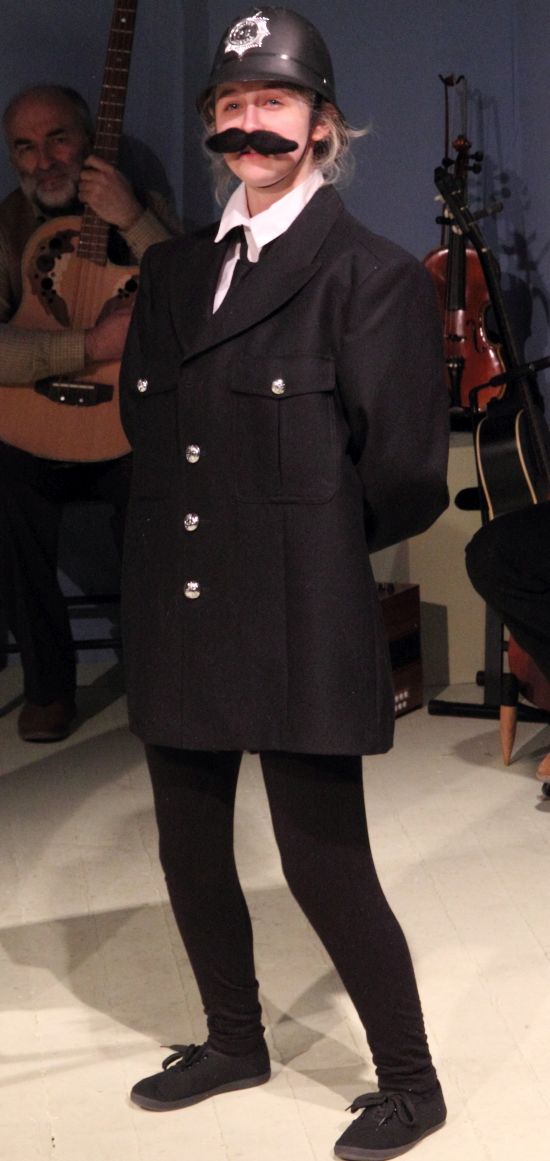 |
|
... Brenna Smith gave an amusing caricature of the policemen, PC Felicity (!) Plod, with suitably dropped aspirants and a false moustache. They were obviously having fun. |
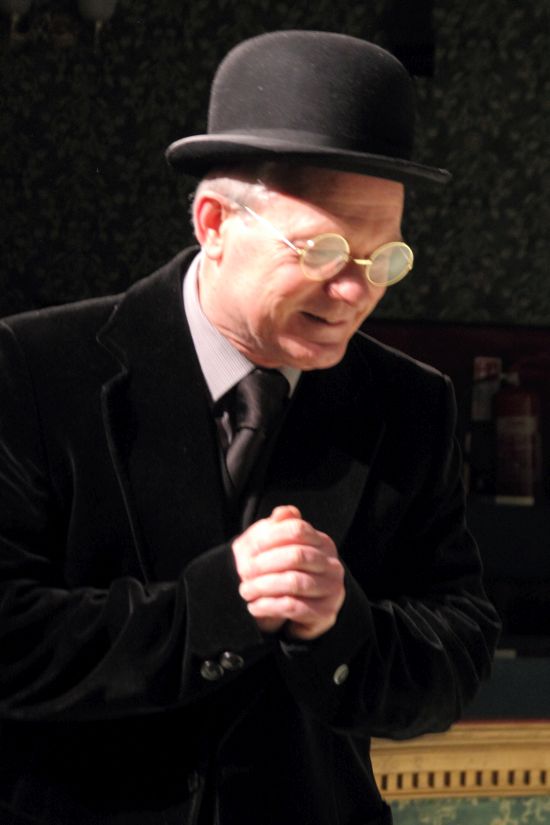 |
|
The four main male parts were exceptional; little Mole was played by Keith Burton with total immersion in the character. In his black velvet jacket, from his paws to his face, and his whole demeanour, he WAS Mole. He matured from a naive and timid animal into a brave and loyal friend. Although delighted with his new surroundings and new companions, he nevertheless never forgot his humble underground home. |
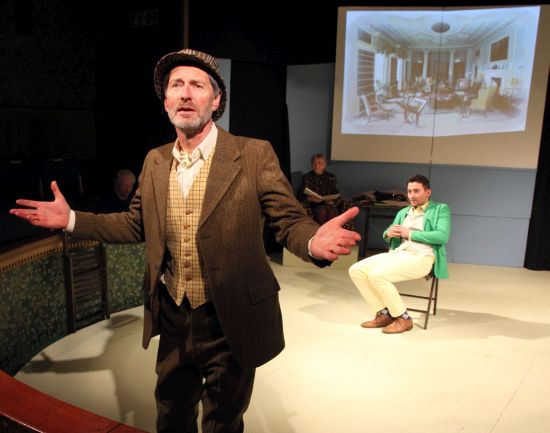 |
|
Michael Thorne, in tweed plus-fours, played the friendly Water Rat (actually a Water Vole, as he explained to us) who introduced Mole to the river and its delights. We saw his delightful smile and heard his poetry, then felt for him when his trust in everyone inevitably led him into trouble. Michael convincingly portrayed an outgoing, trusting and generous animal. |
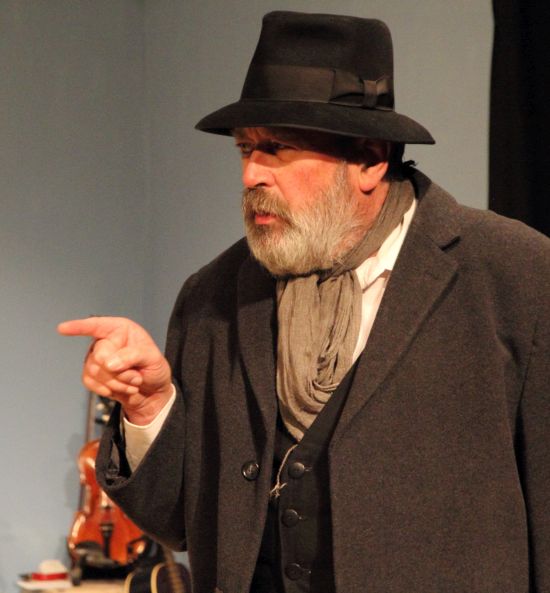 |
|
The anti-social but highly-respected Badger was played suitably grumpily by Jerry Harvey. His seriousness and warm hospitality were never more in evidence than in the underground scene, but his determination and bravery were never in question when he came to attempt to reform Toad and restore Toad Hall to him. Jerry's portrayal of Badger was finely judged and we later saw him as two separate and magnificent shire horses, Rupert and Tarquin. His plodding gait exactly captured the movement of a large and heavy horse. |
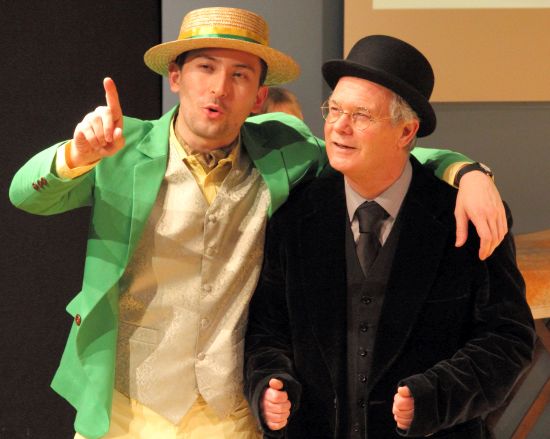 |
|
Ben Derrick showed us a boastful, stubborn Toad, both headstrong and wilful, yet easy to like with his friendliness, enthusiasms and generosity. As a member of the landed gentry his accent, costume and demeanour were superb and his singing voice delightful. Later Ben entertained us in his disguise as a French Creole washerwoman, and his interplay with the many people he met as he escaped from the gaol. Who would have thought that we had so many French phrases in the English language!
The mood changes were beautifully executed - from exuberance to complete dejection and back again in an instance.
Steve played 'Hearts and Flowers' on his singing fiddle to great effect during Toad's falsetto sob stories. |
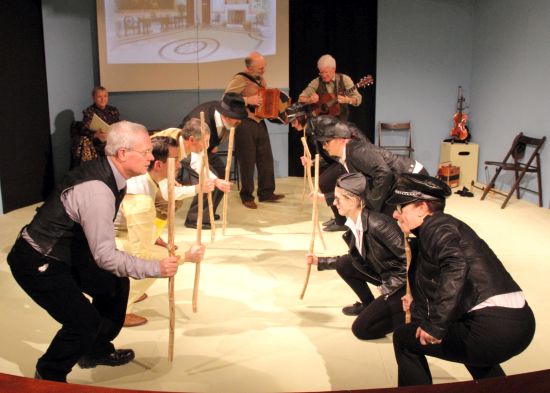 |
|
The play ended with the fight for Toad Hall as a most clever Morris Dance with hazel branches - just one of the many quirky ideas from the inventive director. |
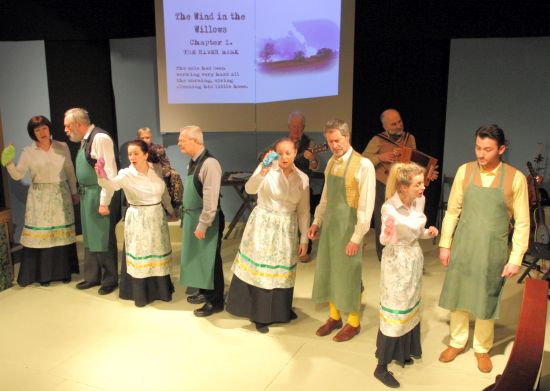 |
| Once again we have been treated to a superb production in the high standards of Pateley Bridge Dramatic Society. We send a huge 'thank you' to all concerned, not forgetting Sheila Smith who last year celebrated 20 years as the prompt, and Sue Hickson, Steve Hunt and Craig Joynson in the effects box. |
Andrea and Brian Ives
[A shorter version of this review appeared in the Nidderdale Herald]